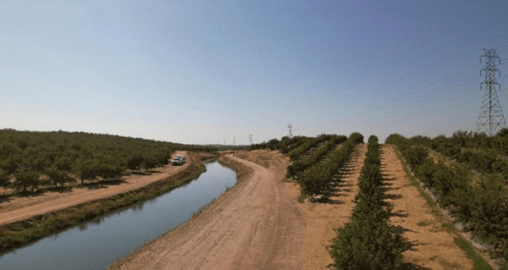TradeBacked: How Standardized Bar Codes Can Make Supply Chains More Transparent
November 10, 2022 | TradeBacked
Greater use of bar codes can make global supply chains more robust and enhance the ability to verify social and environmental standards.
Look around you. How many bar codes are within your reach? Three? Four?
It seems as if these stripes of coded messages, and their upgraded offspring the square blotches of information known as QR codes (for “quick response”) and the tiny radio devices known as RFIDs (radio frequency identification), are virtually everywhere. Still, there is a need for the technology to reach even further and improve global supply chains in the process.
Greater use of this 48-year-old system of identification standards would help make global supply chains more environmentally and socially sustainable, improve safety and security for key goods like food and medicine and generally make trade more efficient, sustainable and inclusive.
A beep in 1974 signaled the arrival of the technology when a bar-coded package of chewing gum became the first item to be scanned in a store. Now the non-profit global organization in charge of the standards that make the technology possible, known as GS1, is joining with governments and multinational organizations to spread its use throughout global supply chains and make the information contained in bar codes more accessible.
There is an urgent need to make global supply chains more transparent. Without a clear understanding of supply chains, and without the ability to map every component part of the production and distribution process, the public and private sectors cannot identify and address bottlenecks that impede the efficient production and delivery of critical goods. Nor can environmental and labor standards be properly monitored without more and better information.
Greater use of a unified system to identify goods would help to fix that.
GS1 has more than a million organizations as its members. It operates in more than 100 countries, ensuring that the systems used by retailers, manufacturers and throughout supply chains can be understood by everyone in the system, using common standards and methods.
It is easy to see how a common standard adopted throughout a supply chain can help retailers and manufacturers understand important questions about their operations. That’s why 150 million products are now registered through its global systems.
Given their ubiquity, the success of the GS1 standards in many supply chains is obvious. But gaps in the use of its standards remain. Making those standards even more widespread can drive transparency through supply chains to facilitate verification and monitoring of environmental standards.
One area which could benefit from greater use of these global standards is food safety and security. There is a growing need for better information on food products, whether for consumers, governments and regulators or for food processors further along the supply chain. Everyone wants more information on how, where and when their food is produced, whether farmers used sustainable methods and if workers were adequately compensated.
Any issues with food safety can also be more easily addressed if information on where and when it was produced was more easily available. All of that data would be more accessible using standardized technology.
Another area where those standards are needed and which has particular relevance for Asia is the movement of goods over borders. Many supply chains use GS1 standards as a matter of course to track and identify goods within the chain, but the system can grind to a halt when those goods hit a border. There, the same goods can be subjected to a range of individual methods of identification that differ from country to country and are not transferable to other jurisdictions.
One swipe of a barcode reader may be all that is needed to identify a pallet of goods at a retailer but when it crosses a border in Asia that same pallet may need to be accompanied by a pile of forms to detail the same information.
In 2014, Asia Pacific Economic Cooperation (APEC) economies agreed that “the use of standardized codes will enable information about traded goods to be easily understood and shared by all parties. We therefore encourage APEC economies to work with the private sector to promote further cooperation on global data standards and their wider use by developing pilot projects.”
Since then, pilot projects have helped show the potential for the technology’s use. GS1 is working to have Asian governments agree on a standard and common system of identification that would speed the processing of goods and help to dismantle barriers to entry for smaller firms.
So far, the European Union, the United States and the People’s Republic of China have begun using GS1 standard identification tools at their borders. In the People’s Republic of China, the time to declare an import of goods has dropped to 10 seconds from 20 minutes before the technology was in use.
Only 25% of Asia and Pacific economies have either adopted the GS1 standards for their borders or are actively considering adoption. To keep goods moving, to identify and fix problems within supply chains and for less red tape and hassle for smaller companies at borders, that needs to change.
Despite its success so far, the bar code needs to continue its penetration into the global economy to make global supply chains more robust, and to underpin our ability to verify social and environmental standards.











